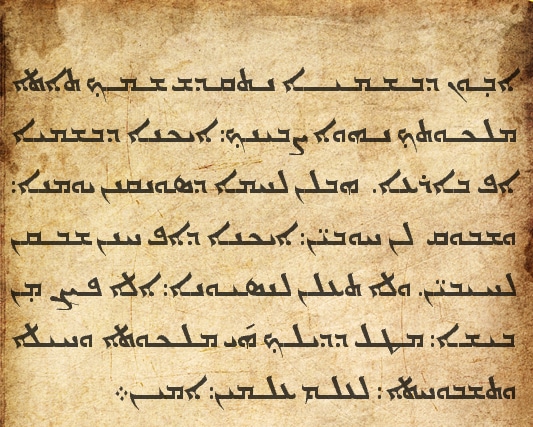Jesus is believed to have spoken Aramaic, which was a Semitic language spoken in the Middle East during his time. It was the common language of the Jewish people and was also used as the lingua franca in the region.
RELATED: Scrub Daddy’s net worth – How rich is the Scrub Daddy 2023
However, it is also possible that Jesus may have known and spoken other languages, such as Hebrew and Greek, which were also widely used in the region during that time.

Aramaic is renowned for being the language spoken by Jesus. Originating in the middle Euphrates, it is a Semitic language that spread to Syria and Mesopotamia around 800-600 BC.
The oldest surviving inscriptions from this period are written in Old Aramaic. During the Persian Empire, Aramaic became one of the official languages, known today as Biblical Aramaic, and the Arabic texts in the Old Testament are written in this dialect. Peshitta, a Bible translation from around AD 100-200, is also in Biblical Aramaic.
Following the birth of Christ, Aramaic dialects were employed as a literary language by Jews, Christians, and Gnostic groups. These dialects are still used as a liturgical language by Jews, and Christians who identify as Assyrians, Syrians, Chaldeans, Nestorians, and Mandeans, and are classified into two branches: West Aramaic and East Aramaic.
After the Muslim conquest, Arabic replaced Aramaic as the spoken language, leading to its decline. Currently, there are four spoken versions of Aramaic, with approximately 3 million speakers: Turabdinic, Urmic, and Neo-Mandean, based on East Aramaic dialects, and the language of Maaloula in Syria, rooted in a West Aramaic dialect.
Only Urmic and Assyrian are written languages, and the Aramaic script is based on a version of the Phoenician alphabet, with Hebrew and Arabic scripts being developments of it.
While Aramaic studies are significant in linguistics and philosophy, they also hold relevance to other humanities disciplines such as history, cultural studies, comparative religion, and comparative literature.

However, in its regions of origin, the language is currently threatened with extinction. An inquiry is urgently required into the status and condition of the language, as well as the support it needs to develop and survive.
In recent decades, immigrant communities have brought the Aramaic language and traditions to various countries, but the original language groups have dwindled, making it difficult to pass on these traditions to future generations.
The language is important for communication and tradition for the groups whose native language it is, and it holds great significance for theological studies in Judaism, the early Christian Church, and Islam.
Nevertheless, Aramaic currently has no “home,” nor a center responsible for the language, requiring responsibility and cooperation between countries and educational institutions, as well as dialogue with the language groups involved to develop the written language and ensure its survival.













